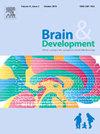Video game exposure in children with epilepsy: EEG and clinical findings
IF 1.4
4区 医学
Q4 CLINICAL NEUROLOGY
引用次数: 0
Abstract
Objective
To investigate the effects of video game exposure on pediatric epilepsy patients, focusing on electroencephalography (EEG) and clinical outcomes.
Methods
A total of 94 pediatric epilepsy patients aged 6–18 years (juvenile idiopathic generalized epilepsy, childhood absence epilepsy, self-limited idiopathic focal epilepsy [SeLEAS and SeLECTS]) and 57 non-epileptic controls were enrolled. EEG recordings were obtained while patients were awake, asleep, and during video game play. The impact of video games was analyzed across different epilepsy subgroups and according to epilepsy control status.
Results
Twenty-five patients with EEG deterioration in the entire group, three of whom were from the control group (p = 0.032). Among juvenile idiopathic generalized epilepsy patients, 2 of 21 controlled and 6 of 11 uncontrolled patients were adversely affected by video games (p = 0.01). In the SeLECTS group, none of the controlled patients and 3 of 11 uncontrolled patients showed adverse effects (p = 0.063). In the absence epilepsy and SeLEAS groups, epilepsy status did not significantly affect video game response (p = 0.250, p = 0.603). Patients with pattern sensitivity and photosensitivity had a higher risk of EEG deterioration during video game play than those without these sensitivities.
Conclusions
Playing selected video games is safer for patients with juvenile idiopathic generalized epilepsies and the SeLECTS group when precautions are taken, and both EEG and clinical conditions are under control. However, video games pose a risk for patients with absence epilepsy and SeLEAS, regardless of epilepsy control status. These findings underscore the need for individualized assessments and tailored recommendations for video game exposure in pediatric epilepsy patients.
求助全文
约1分钟内获得全文
求助全文
来源期刊

Brain & Development
医学-临床神经学
CiteScore
3.60
自引率
0.00%
发文量
153
审稿时长
50 days
期刊介绍:
Brain and Development (ISSN 0387-7604) is the Official Journal of the Japanese Society of Child Neurology, and is aimed to promote clinical child neurology and developmental neuroscience.
The journal is devoted to publishing Review Articles, Full Length Original Papers, Case Reports and Letters to the Editor in the field of Child Neurology and related sciences. Proceedings of meetings, and professional announcements will be published at the Editor''s discretion. Letters concerning articles published in Brain and Development and other relevant issues are also welcome.
 求助内容:
求助内容: 应助结果提醒方式:
应助结果提醒方式:


